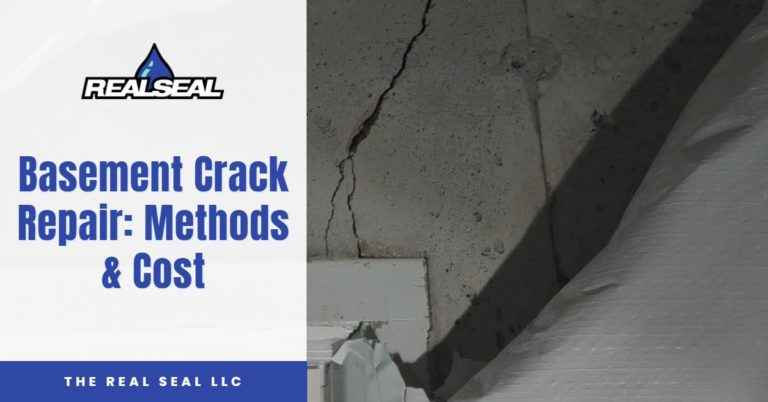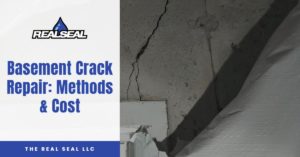How can basement crack repair help you? There are two types of basement cracks you could be looking at; structural and non-structural. In this article, you’ll learn the difference between structural and non-structural cracks, what causes basement cracks, different crack repair methods, and how much those methods cost.
Structural & Non-structural Basement Cracks
It’s important to know what type of cracks you have in your basement.
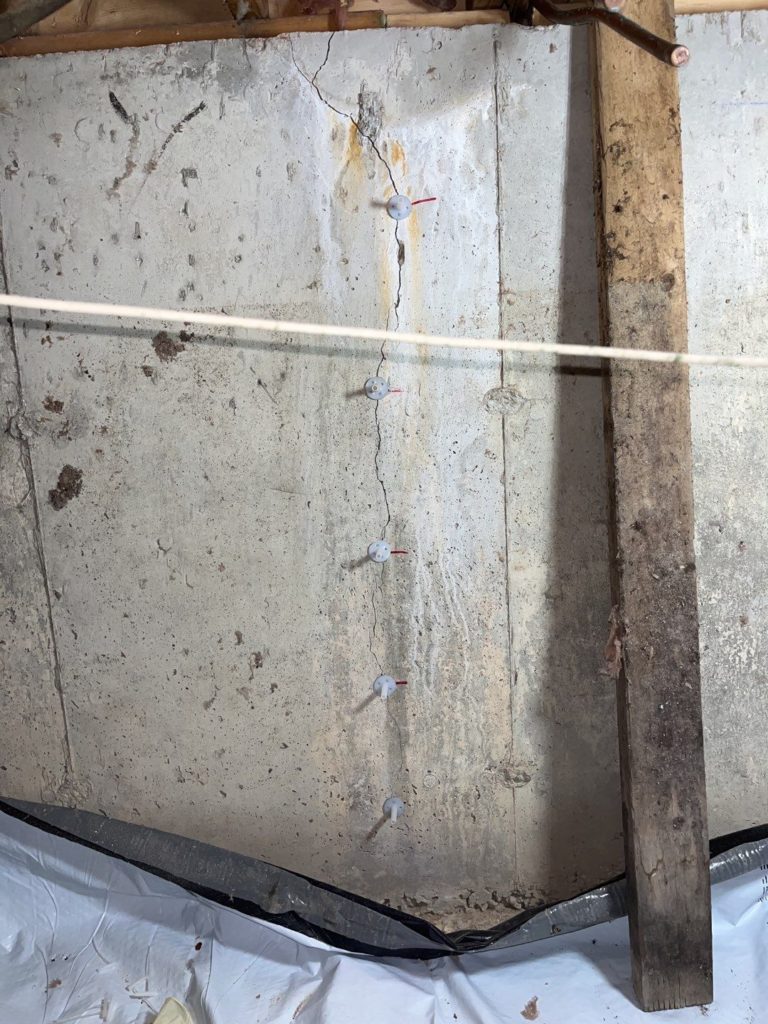
Structural cracks
A structural crack is a basement crack that poses a threat to your home’s structural integrity. They can either lead to larger issues or, they’re the result of existing issues. Here’s how you can identify a structural crack.
- Look for cracks wider than 1/10 of an inch.
- Look for stair-step cracks in concrete block walls or brick facia above your basement.
- Look for cracks that run horizontally across your basement wall. These cracks might be accompanied by bowing walls.
- Look for a series of vertical cracks that run parallel to each other.
- Look for large diagonal cracks at the corners of your walls on both sides.
- Look for cracks that run across your ceiling and down your walls.
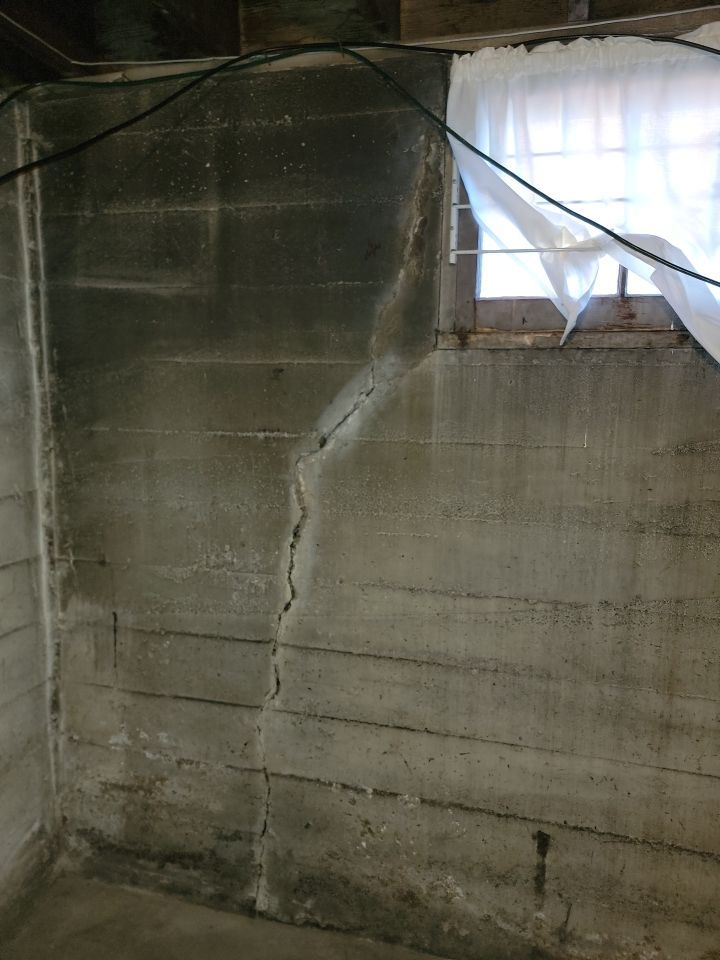
A non-structural crack is a crack that doesn’t threaten your home’s structural integrity. Professionals also call these “waterproofing” cracks because even though they aren’t a structural issue, they can still allow water to seep into your basement. Here’s how you can identify a non-structural crack.
- Look for cracks smaller than 1/10 of an inch.
- Look for isolated vertical cracks that run from the top of your foundation wall to the bottom that don’t change in size.
- Look for cracks found in a single block of concrete.
- Look for cracks near windows, corners of your walls, floors, below I-beams, or at longer sections of your basement.
What Causes Basement Cracks?
Below are the most common reasons why basement cracks form, split between structural and non-structural cracks.
Structural cracks are caused by:
- Differential settlement – When your home is finished being built, it will slightly settle into the soil beneath it in a process called uniform settlement. Differential settlement is when sections of your home settle at different rates. This can cause your basement walls to crack, bow, lean, or sheer.
- Expansive soil – Expansive soil expands and shrinks based on moisture content. When clay-rich soil absorbs a lot of water, it grows. Then, when the soil dries, it shrinks. If the soil around your basement walls undergoes a constant growing-shrinking cycle, it can exert pressure and cause your walls to crack.
- Hydrostatic pressure – If water builds up at your basement walls and you don’t have a proper drainage system, your walls could experience hydrostatic pressure. As the soil absorbs more water, its volume increases and pushes against your walls.
- Frost-heaving – Frost-heaving is when soil freezes, causing it to rise. As it thaws, the soil settles back down. If the soil around your basement walls experiences this up-and-down movement, it can cause them to crack.
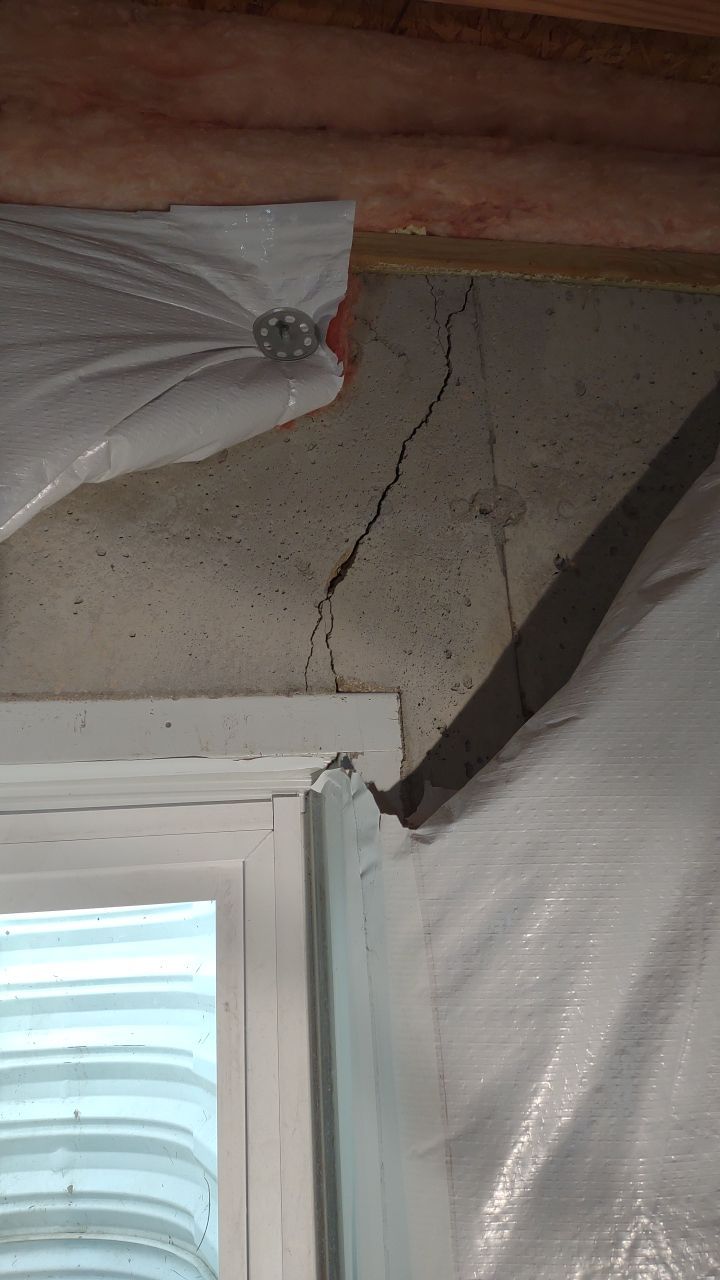
Non-structural cracks are caused by:
- Concrete shrinkage – Concrete shrinkage is when a poured basement wall dries too quickly, causing the concrete to shrink and develop thin cracks.
- Aging – Basement walls can crack over time simply due to aging. These cracks are usually under 1/10 of an inch wide.
Read more about – foundation cracks are normal.
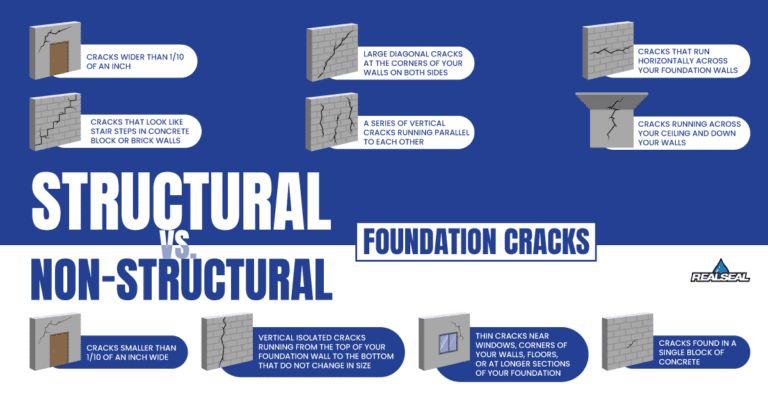
Basement Crack Repair Methods
First, let’s start with repairing structural basement cracks.
Structural crack repair methods
Wall plate anchors – If you have horizontal basement cracks, professionals will recommend using wall plate anchors to stop the wall from bowing. First, a wall plate is attached to your inside basement wall. Then, an anchor is placed outside your basement. Lastly, a high-strength rod connects the anchor to the plate and pulls your wall outward.
Helical tieback anchors – Instead of placing an outside anchor, helical tieback anchors are drilled from the inside of your basement wall. Like a corkscrew, your wall is pulled outward as the anchor twists.
C-channel anchors – C-channel anchors help distribute the load across the whole length of the cracked basement wall. Instead of an inside wall plate, a steel beam is attached to the cracked wall. Then, an anchor is placed outside and is connected to the steel beam with a high-strength rod. Finally, the steel beam is anchored to your basement footer.
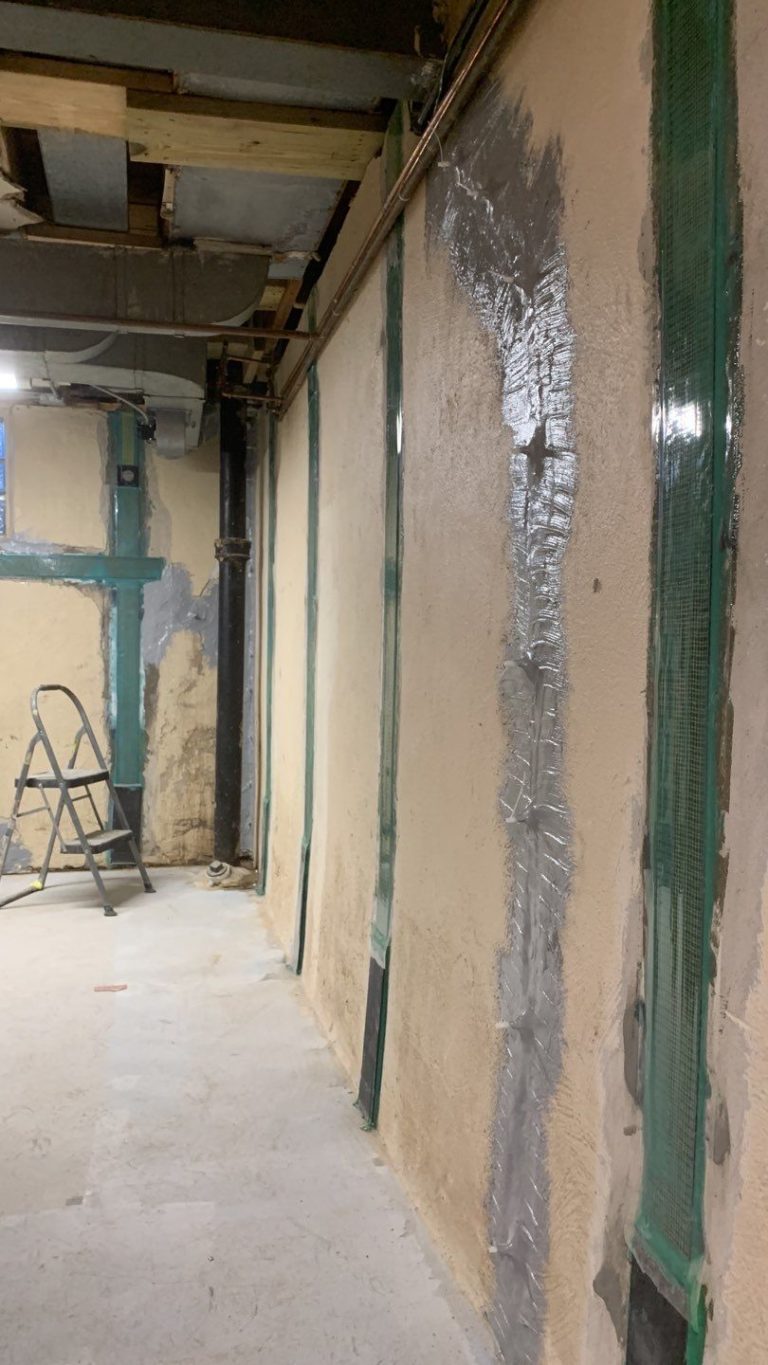
Invisibeam carbon fiber straps – Invisibeam carbon fiber straps are usually used to repair cracked bowing basement walls. First, a galvanized bracket is anchored to the top of your house frame. Then, the strap is placed across the affected wall, either vertically or horizontally, depending on the damage. Lastly, the strap is anchored to your basement footer.
Steel push piers – Steel push piers are used to counter differential settlement. Steel push piers are pushed deep into the soil under your basement until they find load-bearing soil. Using hydraulic jacks, your basement is lifted back to the maximum practical level (the ultimate amount of foundational lift attainable before causing structural or cosmetic damage to your home).
Helical piers – Helical piers work the same as push piers, but instead of being pushed into the soil, they are twisted like corkscrews. After they reach load-bearing soil, hydraulic jacks lift your basement back to the maximum practical level.
Non-structural crack repair methods
Epoxy crack injection – If your cracks are non-structural, professionals recommend sealing the cracks using an epoxy injection. First, a surface patch is created using an epoxy bonder. Then, the crack is injected with a 2-part epoxy that waterproofs and reinforces your basement wall.
Carbon fiber staples – Carbon fiber staples can be used to repair both structural and non-structural cracks. The staples are inserted along the crack using grinded slots. Then, they are fused into the concrete using a high-strength epoxy.
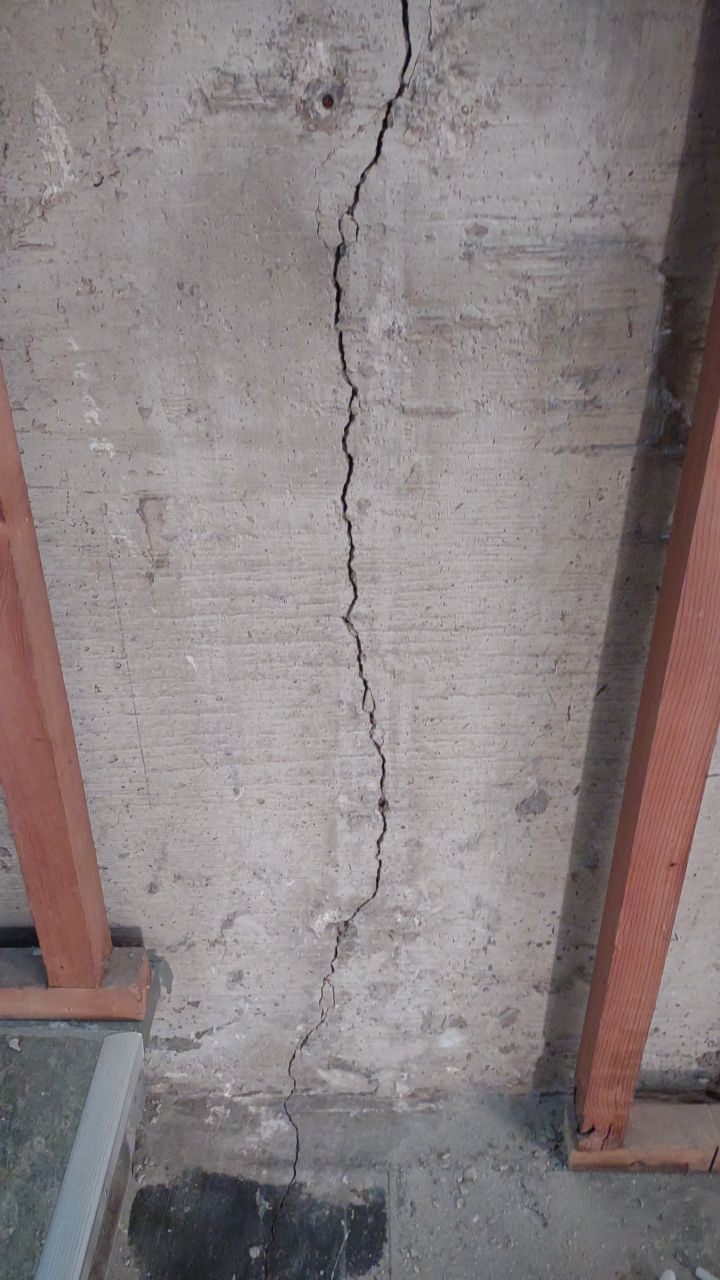
How Much Does Basement Crack Repair Cost?
Structural crack repair
Wall plate anchors, helical tieback anchors, c-channel anchors, and carbon fiber straps can cost around $5,000 to $15,000. Depending on how many piers are needed, steel push piers and helical piers cost around $12,000 to $16,000
Non-structural crack repair
Carbon fiber staples and epoxy injection can cost around $500 to $2,000.
Basement Crack Repair Professionals
If you live in the Greater Chicago area and need basement crack repair, who do you call? There are so many options out there. Who can you trust to provide quality service? You need the real deal, and you need The Real Seal. Call us today, and we’ll get you started with an in-depth inspection, free repair estimate, and a list of our finest solutions. We also provide basement waterproofing, crawl space encapsulation, crawl space repair, concrete leveling, and more.
Please note that the prices referenced in this blog have not been updated since publication and may differ from current prices. Current price estimates are available upon request.
